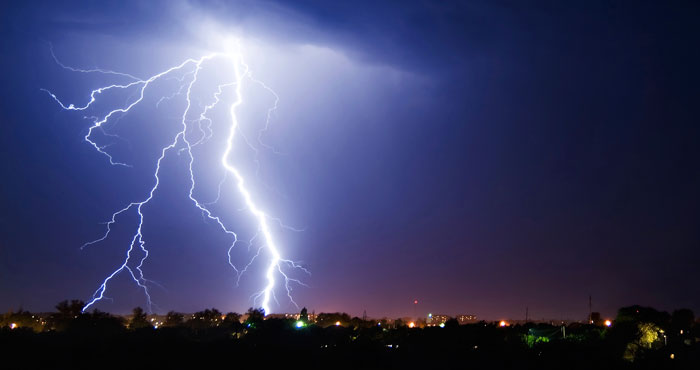When Should a Roof Get Installed?
Posted by Corey Zeller Comments Off on When Should a Roof Get Installed? Uncategorized
When Should a Roof Get Installed?
As soon as damage is detected (if not sooner)! That’s because the longer you wait the less likely you are to incur further damage. You’re also more likely to make use of any warranties or insurance that you may have. Sure, there are ideal times of year to install a roof, but you don’t always have the luxury of installing your roof in the ideal time of year! Although you certainly could! Consider these factors when deciding when to act.
Replace Your Roof Before It Gets Damaged
When you encounter a symptom of a damaged roof that means your roof already should have been replaced. If your roof is under 10-years-old then the cause of the damage might be related to the quality of the workmanship or extreme weather conditions. But if you’re roof is over 15-year-old, then the damage you see is likely the result of old age. Your shingles are made of fiberglass and asphalt. As shingles age, the fiberglass falls off and your shingles become less water-resistant. This leads to mold and algae growth, peeling, cracking, and blown off shingles.
The Best Times Of Year to Replace Your Roof
The best time of year to replace a roof is when temperatures are between 50 and 80 degrees. Asphalt shingles rely on the radiant heat of the sun to seal properly. That’s because they have an adhesive strip that keeps them secured. They’re nailed down on top as well, but the adhesive strip still needs to be activated. Adhesive strips won’t seal in cold weather. That doesn’t mean they’ll never seal; it just means they’ll seal on a hot enough day. And until your strips seal, they’ll be vulnerable to blow off. A category 2 or 3 hurricane would take off a lot of unsealed shingles!
85 degrees or above days make for poor working conditions. It’s like 130 degrees on a roof because the shingles are a beacon for extreme heat! Shingles get so hot you can’t touch them without a glove. Additionally, dehydration and heat exhaustion impact workmanship. You want the crew that’s working on your roof to see straight and maintain their balance! This will keep everyone safe while also making sure your roof doesn’t get damaged during installation. When your roof is hot enough, smudging occurs. That’s when fiberglass comes right off the shingles. If it’s a steeper roof and workers are on the balls of their feet to stay on, they may damage the shingles. This often happens where you rest your ladder on the roof as well. Similarly, if the weather is too cold, shingles become too brittle to handle. Fingers can also become too numb if it’s cold enough. For this reason, Proven Contracting tends not to take jobs when the temperature is below 40 degrees. You risk damaging brittle shingles and it’s just better for your roof when the temperature is hot enough to activate your adhesive strips.
Other Seasonal Considerations
In the fall, there are more leaves, which may make it challenging to clean up shingles and nails, but otherwise, there’s no impact. Similarly, in the spring people’s flowers are in bloom, so there may be some concern that in the process of getting shingles off the roof that workers may ruin your garden, but otherwise there’s no impact. Some seasons are just more challenging than others when it comes to roof installations!
Act Quickly To Make Use Of Warranties Or Insurance
Your manufacturer will provide you with a warranty to cover the cost of replacing a defective roofing material. However, you’re more likely to make use of a workmanship warranty, which is a warranty that covers you in the event that your roof is damaged as a result of poor installation. In either case, you want to act fast so that you can make use of those warranties!
Proven Contracting has achieved Master Elite status from GAF, a top of the line manufacturer of roofing parts. That’s a title that’s awarded to only the most skilled of craftspeople! Proven Contracting only uses GAF components, so the same manufacturer’s warranty covers all the parts. So, you’re unlikely to use the workmanship warranty because the installation will be top-notch and you’re unlikely to use the manufacturer’s warranty because the products are equally high quality!
In the event of your roof getting damaged by an act of nature, you should contact your homeowner’s insurance right away. So long as your roof was installed in a manner that meets all the most current building codes, which it will be if it’s installed by Proven Contracting, and so long as your roof is regularly inspected, then your homeowner’s insurance should compensate you for the cost of repair. Given that the roofing company calls it an actual act of nature and so long as your roof hasn’t exceeded its lifespan. The faster you act the more likely you are to get help from your insurance company. And even if your roof is past its lifespan, check in with your insurance company to see if you can be partially reimbursed.
Don’t Let Money Concerns Delay You!
Money may be tight or you may be debt-averse, but that shouldn’t stop you from replacing your roof right away! The longer you hold out the more likely it is that your roof will get more damaged. And that damage may extend to other parts of your home as well like drywall, paint, insulation, your electrical system, etc. That will only make your roof replacement more costly! Luckily, you have many options.
To begin with, Proven Contracting is approved to help you put together a financing plan that’ll work for you! Although, if you have a lot of equity in your home, a low-interest loan may be an even better option. If you have good credit you may also want to consider a zero-interest credit card. You might even be able to pay your entire roof off before the interest kicks in, or pay enough of your roof off to not have to pay that much interest! Even if it means getting into debt, you shouldn’t put off getting your roof replaced.
You can also get a cash-out refinancing. That’s when you get a new mortgage on your home for more money than your home requires so that the additional funds can be used as seen fit. In this case, those funds would cover the cost of your new roof! You can also pay off any high-interest debts so that your budget is less constrained. Your new mortgage can also provide more accommodating terms. That way you’re paying less per month toward your mortgage and, again, have a less constrained budget.
You can also consider local charities, crowdfunding, or consult with your county government to see if you qualify for financial assistance. The point is, don’t let your budget dictate when you replace your roof because the answer to the question of, “When should a roof get installed?” is ASAP! And since some of these financing options will take time to implement, you need to act quickly.
Signs That It’s Time To Replace Your Roof Now!
Outside of spotting a massive hole in your roof, there are several signs that your roof need to be repaired fast. These are indicators to watch out for other than simply the age of your roof, although the fact that you’re seeing them means that you’ve already waited too long.
Granules: What makes your shingles waterproof is fiberglass. When your shingles get too old, the fiberglass literally falls off and your shingles become water absorbent rather than water repellant. When this happens, you can see fiberglass granules collecting around your house. In particular, your gutter runoff is a great place to spot granules. When this starts to happen, your roof becomes more susceptible to these other types of damage.
Worn/Damaged Shingles: When your shingles get older they also get brittle. Brittle shingles crack, fracture, and fly off your roof. You may be able to identify damaged shingles from your lawn.
Algae/Mold: When your shingles become less waterproof or when cracks begin to form, mold and algae may begin to grow. If you see streaks on your roof from your lawn then you may be looking at mold and algae. Debris from trees may exasperate algae and mold growth, while also making growth harder to see.
Flashing or Cement Damage: In order to prevent a roof leak, metal flashing or roof cement is installed in those areas where roof shingles make contact with walls or chimnies. if you notice cracks in your flashing or cement, or if the flashing begins to rust or lift away, it’s time to call a roofing contractor! Do the same if your plumbing vent boots experience damage as well.
Bottom Line
No matter the time of year, if your roof experiences any signs of damage don’t delay and call a qualified roofing professional right away. The longer you wait the more damaged your roof may become! If the temperature isn’t ideal for roof installation, then at least there will be time to wait to install. That beats waiting to think about installing! Acting fast also gives you more time to make use of any warranties or insurance coverage you may have, as well as time to figure out how to pay for your roof repair and replacement.
Free Roof Estimates
"(required)" indicates required fields

